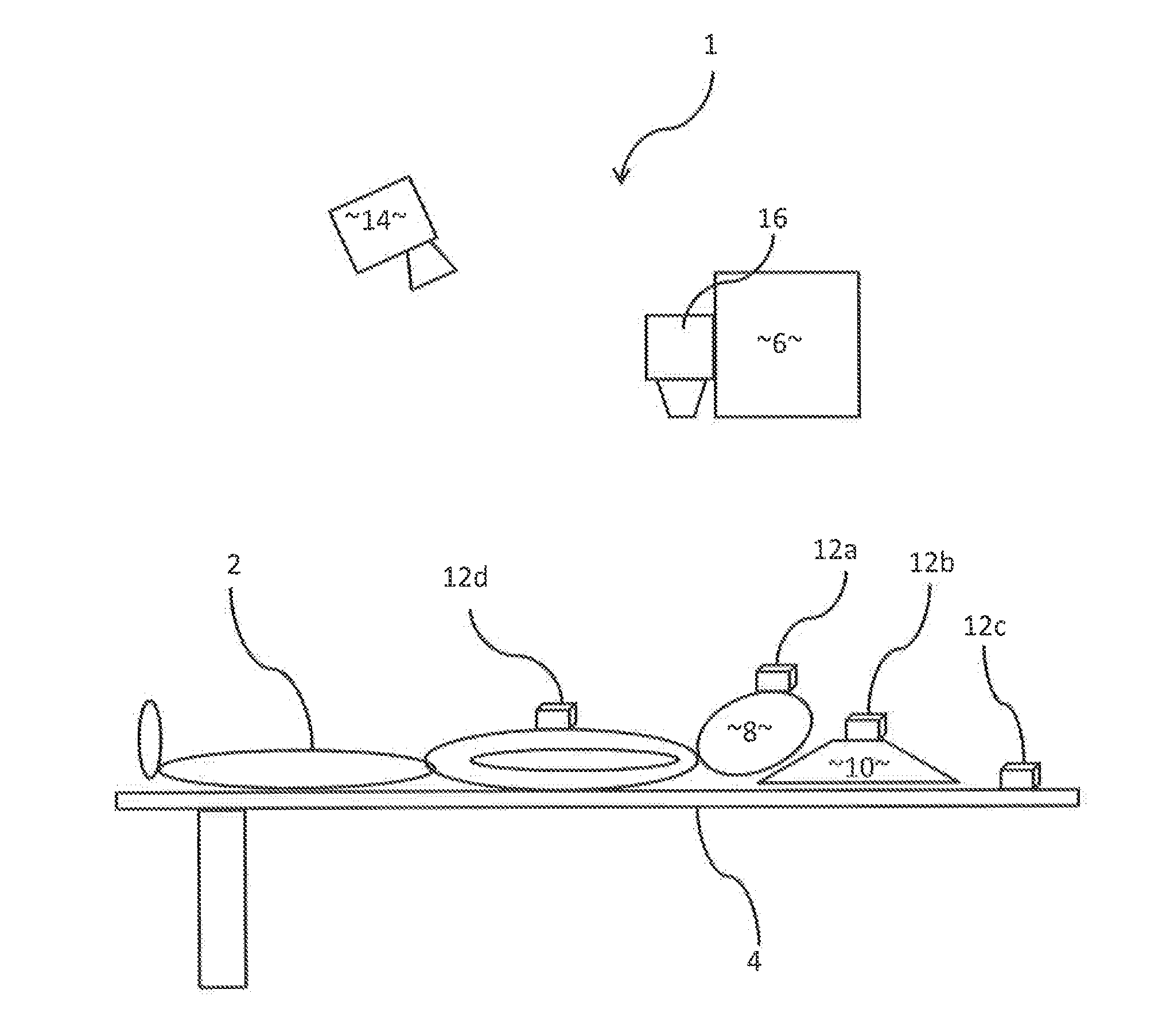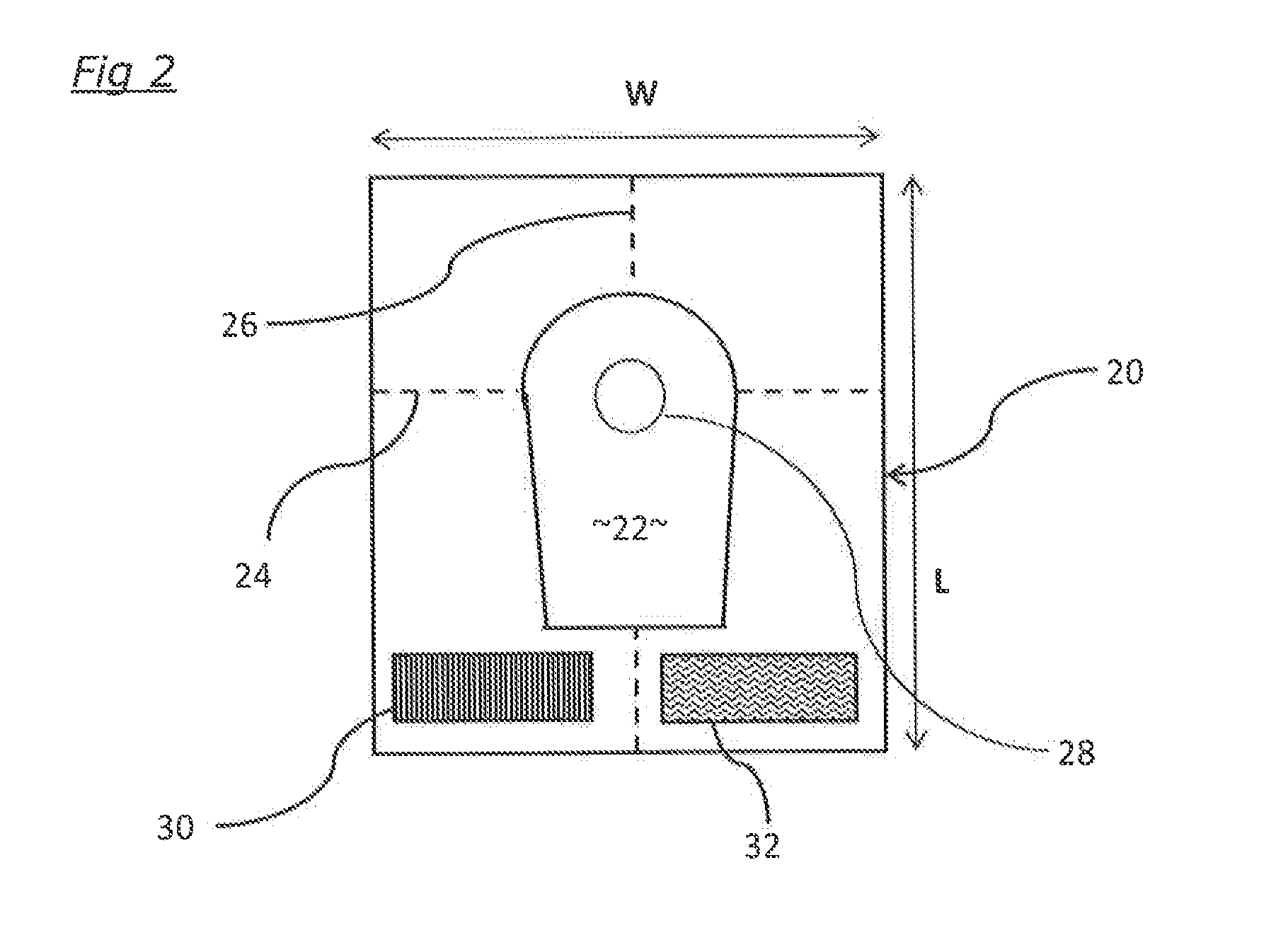Positioning system for radiotherapy treatment
a positioning system and radiotherapy technology, applied in the field of positioning systems for radiotherapy treatment, can solve the problems of inconvenient operation, complicated process of preparing the patient for radiotherapy treatment (or “set up”), and inability to accurately and reproducibly move, etc., to achieve accurate and reproducible positioning, accurate tracking of movement, and accurate positioning
- Summary
- Abstract
- Description
- Claims
- Application Information
AI Technical Summary
Benefits of technology
Problems solved by technology
Method used
Image
Examples
Embodiment Construction
[0015]FIG. 1 shows a radiotherapy treatment system 1 in which a patient 2 is lying on a patient support 4 for radiotherapy treatment generated by a radiation source 6 such as a linear accelerator. The patient support 4 and / or the radiation source 6 are movable so that radiation can be directed at the patient 2 from any desired direction; in this example, the radiation treatment is to be applied to the patient's head 8. The patient's head 8 is supported on a headstep 10. In order for the radiotherapy treatment to be carried out properly as planned, it is important that the patient's head 8 is accurately positioned relative to the patient support 4, which is dependent also on the position of the headstep 10 relative to both the patient support 4 and the patient 2 and / or the patient's head 8. This positioning is monitored photogrammetrically by way of optical markers 12a, 12b and 12c which are fixed to the patient's head 8, the headstep 8 and the patient support 4 respectively; a furth...
PUM
 Login to View More
Login to View More Abstract
Description
Claims
Application Information
 Login to View More
Login to View More - R&D
- Intellectual Property
- Life Sciences
- Materials
- Tech Scout
- Unparalleled Data Quality
- Higher Quality Content
- 60% Fewer Hallucinations
Browse by: Latest US Patents, China's latest patents, Technical Efficacy Thesaurus, Application Domain, Technology Topic, Popular Technical Reports.
© 2025 PatSnap. All rights reserved.Legal|Privacy policy|Modern Slavery Act Transparency Statement|Sitemap|About US| Contact US: help@patsnap.com



